Noise Reduction Coefficient or NRC is the measure of a material's effectiveness to absorb sound in any space. It is a clear and obvious way to recognize a material's noise controlling capabilities.
It is measured by, what looks like, a very narrow scale of 0.0 - 1.0.
The number is shown as a decimal that is easily converted into a fraction, comparing absorbed/reflected sound.
To illustrate:
Perfect Reflection – NRC 0
Materials with a 0 NRC rating have no sound-absorbing abilities.
Perfect Absorption – NRC 1
Materials with an NRC rating of 1 absorbs 100% of sound.
As an example:
Material with a rating of 0.3 will soak up 30% of sound whilst the remaining 70% will get reflected in the space.
A 0.03 NRC rating absorbs 3% and reflects 97% of sound.
Therefore, the higher the NRC rating, up to a value of 1, the better the soundproofing capabilities it has.
Unless you're a qualified sound engineer, you probably won't have the required equipment to rate your acoustic equipment. Worry not, those tests are carried out under controlled conditions and are readily available on the packaging.
NRC is measured under strict conditions in a closed, virtually empty room. The room has no soundproofing material installed.
If at 1000Hz the sound level is 75% lower after the introduction of the soundproofing material, it would be granted an NRC rating of 0.75 @ 1000Hz.
Similarly, if the noise reduction was 5%, the NRC rating would be 0.05 @ 1000Hz.
An NRC of 0.75 and above is considered a good and efficient rating.
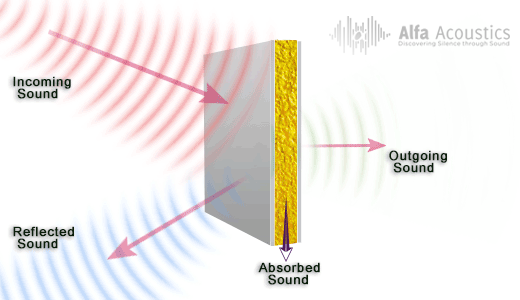
Simply, it is a method of reducing sound reverberation, (echo), for a quieter environment.
Large rooms echo. Think of churches, school halls, and live music venues that have high walls and ceilings with plenty of space for sound to reverberate.
With no form of sound absorption, the sound will bounce from one surface to another, increasing the amplification as it goes. With each collision, the quality of sound deteriorates.
Now consider these same spaces but with a layer of acoustic material.
Sound is a vibrational energy that travels in waves. As the waves come into contact with an absorbent material, instead of being reflected, they are absorbed and transformed into another energy, usually heat.
Sound absorption gives you greater control over the sound that is created, soundproofing is noise-reduction or prevention.
There are three main material styles that absorb sound best: porous, membrane, and resonance.
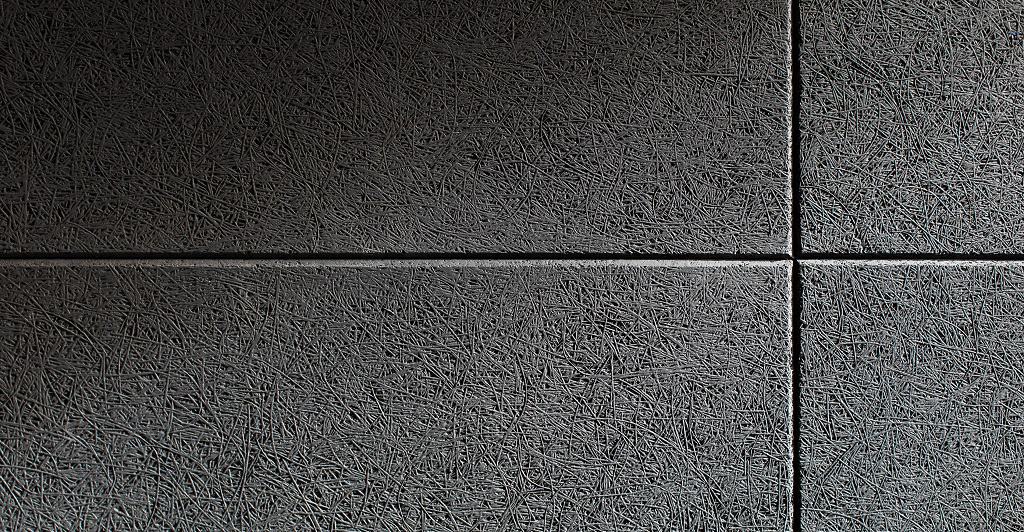
Considered the most effective form of sound absorption and often, the most cost-effective.
The most common types of porous absorbers are:
We know that sound travels in waves until it meets some resistance; a hard surface for it to reflect off, or a porous surface for it to permeate and transform. That is how all energy types work, they collide and transform, or disappear.
Porous absorbers, as the name would suggest, are made from a multitude of tiny holes – cells, through which sound travels. The frictional resistance given from the material is enough to stop the wave and convert it into heat energy.
Porous absorbers are most effective with mid to treble tones. They have minimal success with lower and bass tones.
Curtains and drapes have measured success in absorbing sound, They usually have an NRC of 0.35 or less and typically absorb higher frequencies.
Mineral Wool is the most effective porous sound absorber in our opinion with the following NRC ratings: 0.35 @ 125Hz, 0.63@ 500Hz, 0.83 @ 2000Hz.
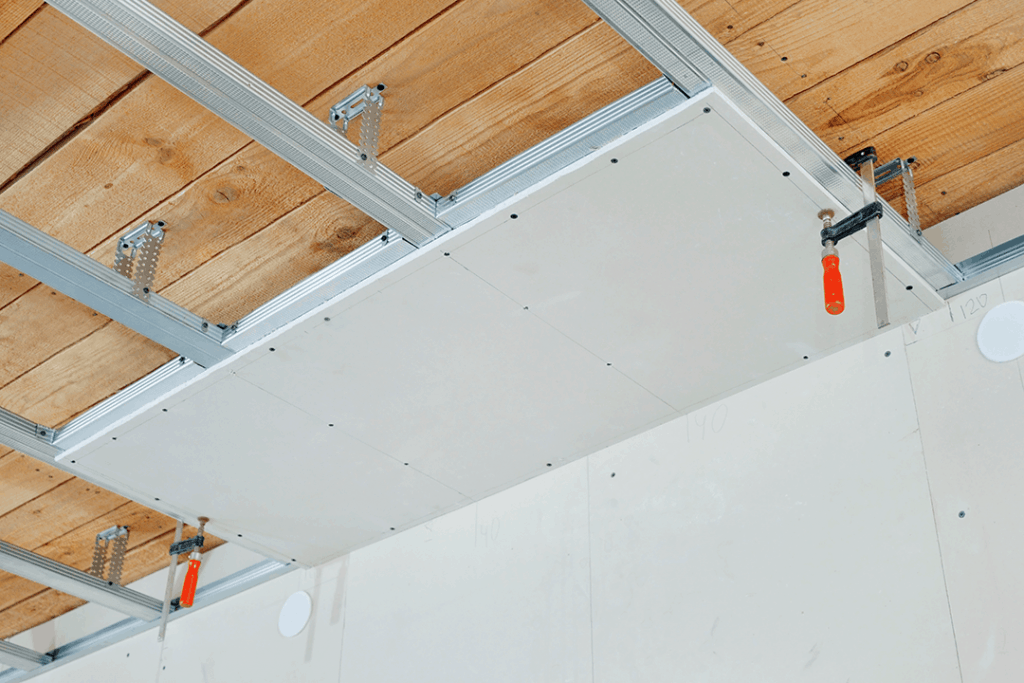
To the untrained eye, most membrane absorbers are dismissed as effective methods of soaking up sound, probably due to their solid, non-porous appearance.
However, used in conjunction with other absorption methods, membranes are highly-effective.
The most common types are:
To use a membrane or plate absorber, place it over an air space, i.e. attach it to the framework of a wall. Sound waves collide with the panel and transform into mechanical energy. The mass of the board and the internal springs formed by the trapped air cause this reaction, known as an oscillating system.
Membrane absorbers are most effective with the lower range and bass frequencies. Therefore, a combination of porous and membrane methods should absorb most frequencies.
This is easily achieved by using mineral wool to fill the air cavities created between the wall and the membrane.
Acoustic plate absorber are highly-efficient with NRC ratings similar to
0.16 @ 125Hz, 0.5 @500Hz, 0.8 @ 2000Hz.
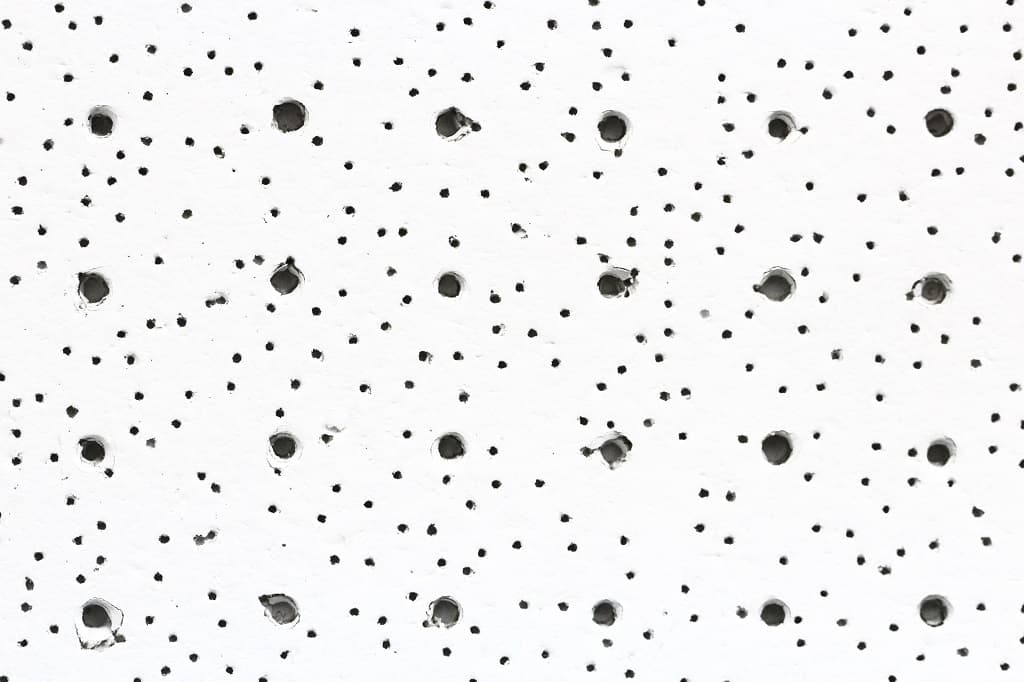
Much like membrane absorption, resonance absorbers depend on the acoustical oscillation system.
This is when there is a mass, the structure of the absorber, with tightly trapped air beneath. The spring created in that air cavity is where the sound waves are transformed into mechanical energy.
By altering either component, the mass, or the air, the varied resonant frequency is achievable. The greater the vacuum, the better the absorbency.
Resonance absorbers manifest in various styles:
Resonance absorbers are most effective when dealing with a single frequency, usually a bass or lower frequency tone. This is why they are most often applied in hydraulic silencers when one monotonous tone is repeated.
Used in conjunction with porous absorption methods, both styles will complement each other to improve their overall success.
All methods of sound absorption will function well and give improved results when combined.
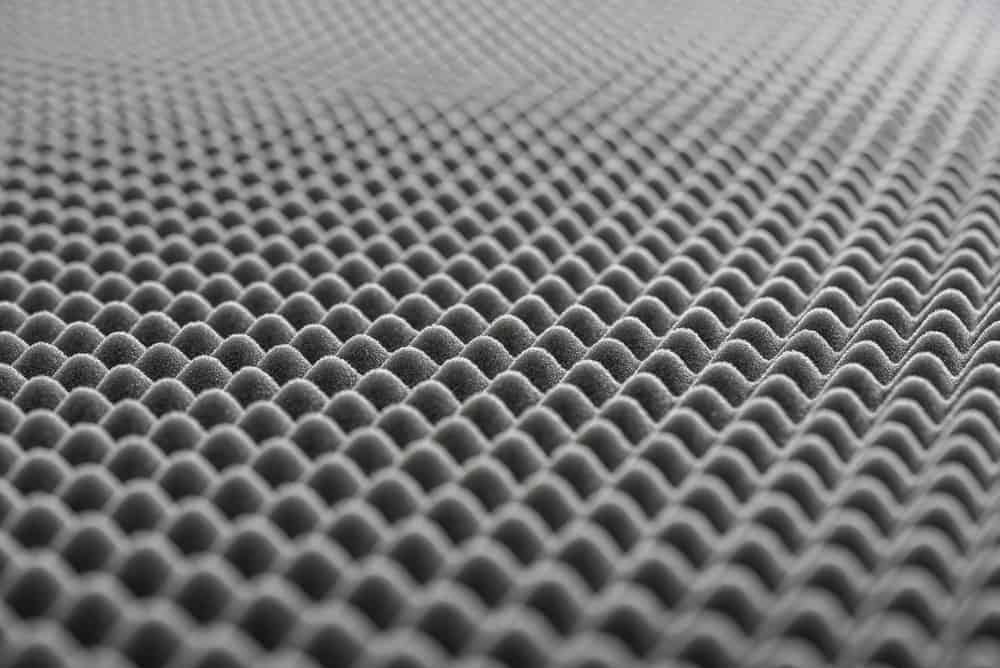
The success of any medium is dependant upon the shape of the room, how the sound absorbency material is distributed within that space and the range of frequencies that it needs to absorb.
Once this is determined the decision of which material is simplified.
Whilst foam is widely used, it is only effective for mid-range and higher frequencies. It will absorb significantly less bass which will become the over-riding noise. Instead of alleviating a sound issue, you might well exacerbate it by filling the room with booming, bass noise. The sound will be imbalanced.
Thicker foam will significantly help, say 50-60cm but similar NRC ratings are achievable with just 10cm width of fiberglass.
All solids can absorb sound to a degree. This is due to their structure; atoms and molecules attached via chemical bonds. However, the more tightly constructed the mass is, the less likely the sound waves are to cause the air between each molecule to oscillate.
So hard surfaces that are rigid and smooth provide cleaner and smoother sound reflection. Marble walls, floors, and counters are a fine example of this.
Tiled kitchens and bathrooms are the most 'echo-y' rooms in the house for this reason. The smooth hard surfaces of the ceramic encourage sound to bounce and redirect from one hard surface to the next. This is sound reverberation.
Conical shapes made from solid materials will reflect and redirect more sound, particularly if they are placed in a corner. The walls provide two further masses for the sound waves to collide into and bounce off.
Unpainted brickwork has a very low absorbency rating, though it can be easily increased by coating it with damping paint.
NRC ratings are not solely for acoustic products, although this is where they are most likely to be found. Everything around us has an impact on the acoustics of a room and can be tested and rated.
Sound absorption comes in many forms, it needn't be ugly, in fact, for the most part, it will go unnoticed.
The overall acoustic performance of a space considers the size and shape of a room and the frequencies of the noise that you are trying to alter. NRC ratings are a clear and concise way to understand and purchase the correct materials the first time.

Snoringsource.com is a participant in the Amazon Services LLC Associates Program, an affiliate advertising program designed to provide a means for website owners to earn advertising fees by advertising and linking to amazon(.com, .co.uk, .ca etc) and any other website that may be affiliated with Amazon Service LLC Associates Program.